Moving Plants Across State Lines
Moving homes can be a big task, and for those who love their leafy, potted friends, learning about moving plants across state lines adds another layer of planning. Plants are not just decor; they are part of the family. So, it’s crucial to understand the steps and regulations for moving them safely and legally. If you need help to find the best moving company for your relocation, Best Cross Country Movers is at your service!
What Do You Need to Know About Moving Plants Across State Lines?
Your plants are a special part of your home. Some of them may have sentimental value, or you may have spent a lot of effort to watch them grow. But whether you should (or can by law) take them with you to your new state depends on two factors: the law and the conditions of growth. If you’re moving from or to Arizona, before you hire some of the best cross country movers Arizona, there are some things you should know.
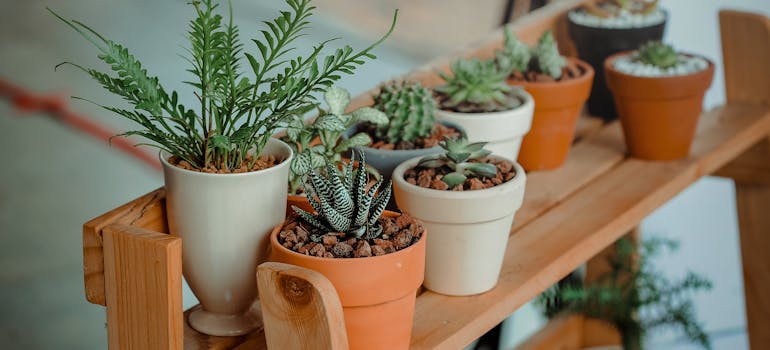
Know the regulations
Understanding state regulations for moving plants is crucial for an easy relocation. Every state has unique rules aimed at stopping pests and diseases from spreading. A great first step involves checking with the US Department of Agriculture, or the National Plant Board. They provide specific details about what your new state requires.
Some states might ask for inspection certificates for your plants. This means your leafy friends could need a health check before they hit the road. These regulations are there to protect local ecosystems. So, making sure your plants comply not only keeps them safe but also contributes to the health of their new environment. Remember, a little research goes a long way in ensuring your plants make it to your new home without any hiccups.
Preparing your plants is a must!
Getting your plants ready for a big move is crucial for their health and safety. Start by switching them to plastic pots a few weeks before moving day. Plastic pots are not only lighter but also less prone to breaking than their ceramic or terra cotta counterparts. This change can also help minimize the risk of transporting pests and soil diseases to a new state.
It’s also important to prune larger plants. Trimming them back can make them more manageable and easier to move. But remember, gentle pruning is key. You want to avoid putting too much stress on the plants before they start their journey. This preparation phase is all about making the move as easy as possible for your green companions. Properly prepping your plants means they’re more likely to arrive at your new home happy, healthy, and ready to grow.
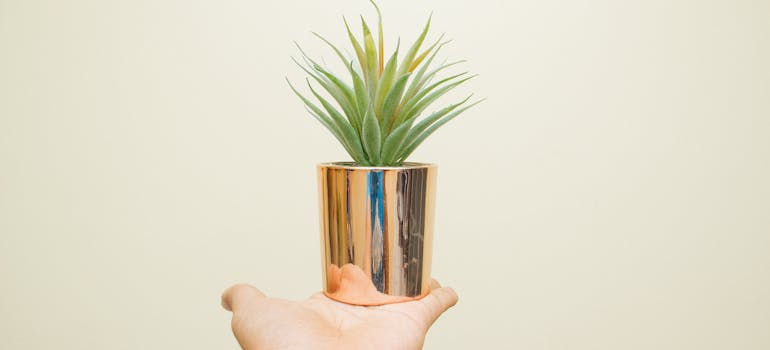
If We Talk About Moving Plants Across State Lines, Properly Packing Is an Imperative
When it’s time to pack, treat each plant with care. Packing your plants correctly is essential for their safe transport. It’s almost the same as packing fragile items. Choose strong boxes that can snugly fit the pots. For tall plants, adding stakes can offer extra support, preventing them from toppling over. It’s important to make small holes in the boxes to allow air circulation. Also, clearly label these boxes as “live plants” and include an arrow to indicate which side is up. This step ensures that anyone handling the boxes knows they contain something living and requires careful handling.
Properly packed, your plants stand a much better chance of arriving at your new home in good condition after moving with the help of cross country movers Oregon, ready to brighten up your space with a touch of nature. This methodical approach to packing not only protects your plants during the move but also helps ease your mind, knowing you’ve done everything possible to transport them safely.
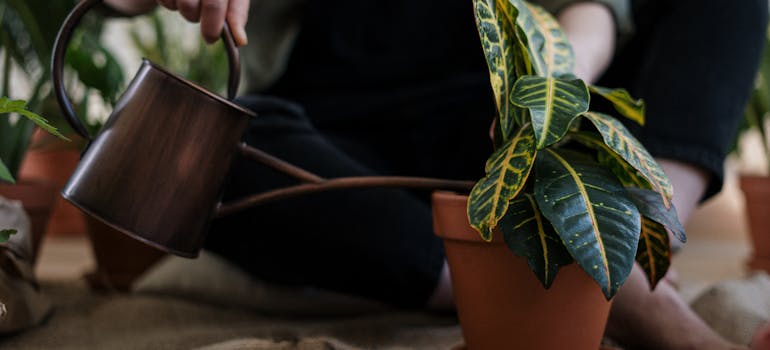
What you need to pack your plant:
- Durable moving box for each pot (small boxes are better for them not to move)
- Plastic pots for replacing clay pots during transport
- Sterilized soil
- Wrapping paper or newspaper
- Bubble wrap
- Plastic bags and ties
- Flea collars
- Paper towels (for cuttings)
How to pack a potted plant
- Place a plastic bag on top of the pot and tie it to the base to hold the soil.
- Stick the bottom of the box well, then place the plant inside.
- Fill up the extra space with wrapping paper or a newspaper so that it is safe but can breathe.
- Poke holes in the box to allow for airflow. A few holes on each side will suffice.
- Label your boxes for moving plants across state lines with “Living plant” and “Fragile”.
Journey with a cutting plant
If the plant is too large to move, then taking a cutting (in fact, a stem or roots that will allow the plant to grow) simply facilitates its delivery to a new home. Here’s how:
- In the morning, make a sharp, clean cut in the area of the flower that you want to take. Choose a healthy growth length of 3-6 inches.
- To take the cutting with you, keep the end wet by wrapping it in wet paper towels. Secure paper towels with rubber bands or ties and save the cuttings in a plastic holder for the stem (for example, like for a bouquet). Most local florists can sell them to you very cheaply.
- If you need to pack a cutting, put it in a plastic pot. Remove all lower leaves and place the cuttings on moist soil. Loosely wrap it in plastic so that it stays wet and stimulates growth. And then put it in the box.
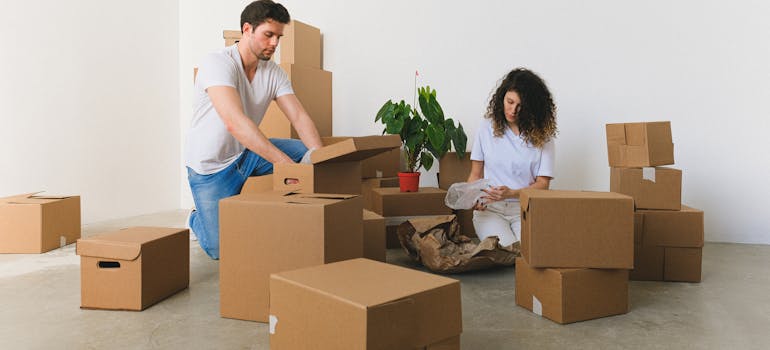
On the Road
If you’re driving to your new home, keep the plants with you in the car. Avoid placing them in the trunk as temperatures can fluctuate too much. During overnight stops, bring the plants inside with you. This might seem like a hassle, but it’s the best way to protect them from extreme temperatures.
For those flying to their new home, it’s a bit trickier. Some airlines allow small plants on board as carry-on luggage, but you’ll need to check with the airline first. Shipping plants is another option, though it can be risky due to potential delays and temperature changes.
Acclimating Plants to Their New Home
Acclimating your plants to their new home is a step you shouldn’t skip. Once you arrive, resist the urge to immediately place them in their final spots. Begin by keeping them in a shaded area for a few days. This allows them to adjust gradually to the new conditions. Slowly move them to where you plan to keep them long-term, paying close attention to how the light in their new environment compares to what they were used to. This careful transition can make a huge difference in how well your plants adapt.
Changes in light, humidity, and even the air can impact their health. Taking the time to acclimate them properly ensures they continue to thrive, bringing beauty and life to your new space. This approach not only shows your care for your plants but also helps ease them into their new surroundings, ensuring they remain a part of your home. Adjusting to a new city will be easier if you have your green friends from the old home by your side!
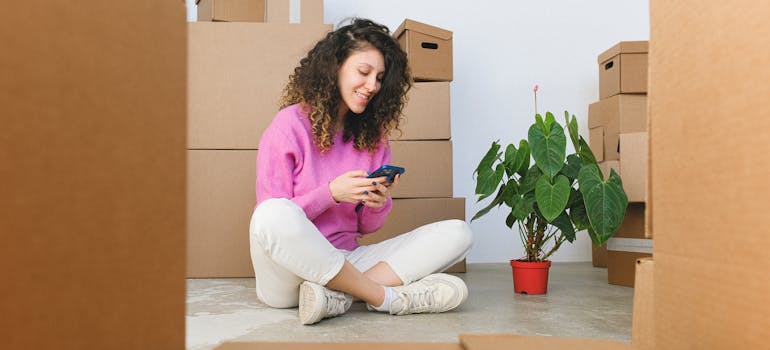
Consider the Season for Moving Plants Across State Lines
If you’re thinking about how to choose your moving day, choosing the right season for your move is crucial, especially when it involves transporting plants. Spring and fall stand out as the optimal times for such relocations. During these seasons, the weather offers a balance that’s neither too hot nor too cold, providing a stress-free environment for your plants. Summer’s intense heat and winter’s harsh cold can pose significant challenges, increasing the risk of harm to your sensitive plants.
For instance, high summer temperatures can lead to dehydration and sunburn for plants, even during a short trip. On the other hand, winter cold can freeze the water within plant cells, causing damage to tissues and, in severe cases, killing the plant.
Therefore, planning your move during milder weather conditions can greatly enhance the chance of your plants adjusting easily to their new home. It’s not just about avoiding the extreme temperatures; it’s also about providing a stable environment for your plants to thrive during the transition. This careful timing ensures your plants arrive in the best possible condition, ready to grow and flourish in their new surroundings.
Local Nurseries and Gardening Centers
Sometimes, despite how much you plan and prepare, moving plants across state lines isn’t practical. In such cases, rehoming them with friends or family can be a kind and responsible choice. But what about after you’ve settled in your new place? This is where local nurseries and gardening centers become invaluable. These places are full of greenery, offering a wide variety of plants suited to different environments. The staff at these centers bring a wealth of knowledge and can guide you toward the best choices for your new home’s specific climate and soil conditions. They can recommend plants that will not only survive but thrive, providing tips on care and maintenance to ensure your new green friends get the best start possible. Visiting local nurseries also offers a chance to connect with the gardening community in your new area, opening doors to advice, workshops, and gardening clubs.
Starting anew with plants from local sources supports the local economy and ensures your garden is in harmony with its new surroundings. This approach not only helps you rebuild your plant collection but also integrates you into the local ecosystem in a sustainable and environmentally conscious way. Find some design ideas for a new home and add your plants to those!
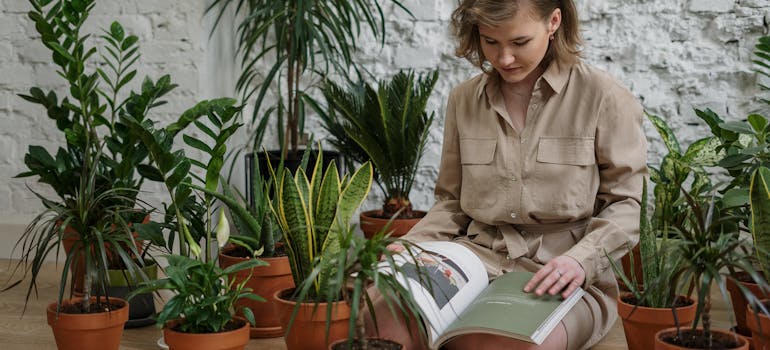
Ensuring Success in Moving Plants Across State Lines
Moving your plants across state lines is a task that requires careful planning and attention to detail. It’s about more than just transporting your green friends; it involves understanding regulations, preparing them for the journey, packing them properly, and ensuring they adjust well to their new home. By taking the time to research state-specific rules and giving your plants the care they need before, during, and after the move, you significantly increase their chances of thriving in a new environment. Remember, the goal is not just to move your plants safely but to help them flourish in their new surroundings. With patience and preparation, moving your plants across state lines can be a successful part of your relocation adventure, bringing a sense of continuity and natural beauty to your new home!





